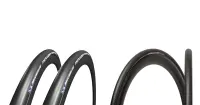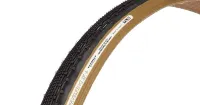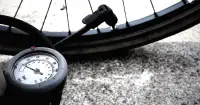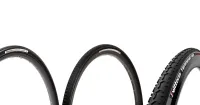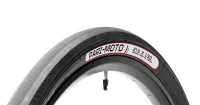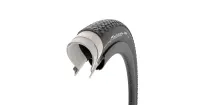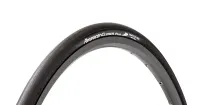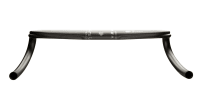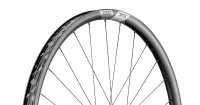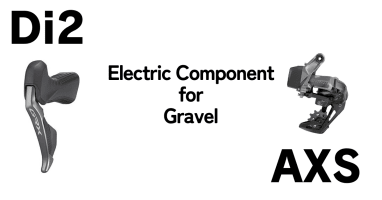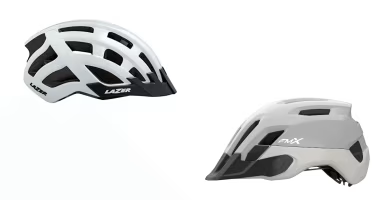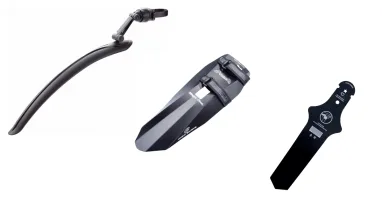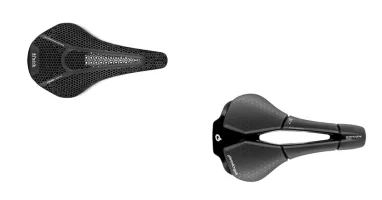Language Menu
- 日本語
- English
Ride more comfort! Ride gravel bike with proper air pressure!
There is a "proper air pressure" for bicycle tires. This section summarizes what the correct air pressure is, how to check it and how to get the correct air pressure, and the changes in riding that can be achieved by changing the air pressure.
Modified at: 2023.11.3Posted at: 2022.9.1
Table Of Contents
Proper and Recommended Air Pressure
Not only gravel tires, but also tire manufacturers set an “optimum air pressure” for each model that provides good driving performance and resistance to problems such as punctures. This is the recommended air pressure.
For example, Panaracer’s Gravel King SK PLUS clincher model, the standard gravel tire, is set at “400-700 kPa” for the 700-26C model. The manufacturer’s recommended air pressure is to operate within this pressure.
In most cases, the tire’s recommended air pressure is printed on the side of the tire, but if you cannot find it, check the manufacturer’s website.
On the other hand, “correct air pressure” is calculated as the most optimal air pressure based on the rider’s weight, vehicle weight, and wheel/tire type.
This is not the tire manufacturer’s recommended air pressure, but only the best air pressure for you and your bike itself.
How to find the correct air pressure
Calculating the correct air pressure calculation for you and your gravel bike is surprisingly complex. Therefore, it is best to use a calculation site.
SRAM, a component manufacturer, has a calculation tool on the web, and we recommend using it.
How to Manage Air Pressure
Once you know your correct air pressure, you can actually adjust the tire pressure.
You can adjust the air pressure of your road bike in the following two ways.
- using an air checker
- using an air pump with an air pressure gauge
As long as you ride a gravel bike, you will need to manage the air pressure frequently, so we recommend that you buy an air pump with an air pressure gauge, even if it costs a little more.
Sports bicycle tires should be inflated about once a week to maintain the proper air pressure, as they are put under high pressure.
How does changing the air pressure change the ride?
Once you are able to manage your correct air pressure, you can customize your ride by adjusting the air pressure a little.
Lowering the air pressure increases cushioning and reduces vibration.
Lowering the air pressure below the correct pressure creates cushioning in the tire. When cushioning is created, the tire cushions the vibrations and impacts from the road surface, making the ride smoother.
This technique is used in mountain biking, for example. In mountain biking, the tire pressure is lowered and a larger tire is chosen to increase the air volume. The higher air volume provides more cushioning and prevents punctures.
The same can be applied to gravel bikes, so try it if you ride on dirt roads a lot.
Since comfort is also affected by the characteristics of the bike, it is advisable to try lowering the air pressure gradually from the correct pressure to find the pressure that is comfortable for you.
Riding becomes lighter when the air pressure is increased.
Lowering the air pressure below the correct pressure increases cushioning, but conversely, the area where the tire comes in contact with the road surface increases, making rolling heavier. This is inevitably a trade-off.
Conversely, if you want a lighter ride, you can increase the air pressure to reduce the surface area of the tire in contact with the road, thereby making the ride lighter. It is the same as feeling like you can go faster when you ride after having your bicycle inflated at a bicycle shop.
It is important to note that you should not exceed the “manufacturer’s recommended air pressure” as explained earlier. Exceeding the recommended air pressure may put extra load on the tire or even cause the tube to burst.
Also, if the air pressure is much higher than the correct pressure, the tires may not be able to withstand the weight of the vehicle (bike weight + your weight).
The standard for gravel bikes! Tubeless Guide
Tubeless tires, which can reduce puncture risk and increase ride comfort, are a staple of gravel bikes. This is a guide on how to choose and operate tubeless tires.
Is tubeless the best? Which type of gravel tire is best?
Tire selection is one of the most enjoyable and difficult aspects of gravel bike customization. In this article, we will look at the differences between tire types and the types of tires to choose for your gravel bike, along with their advantages and disadvantages.
Why so many gravel bike users love tubeless tires? Advantages and disadvantages
One of the most popular customizations for gravel bikes is to convert the tires to tubeless. The following is a summary of the advantages and disadvantages of tubeless and why it is a favorite on gravel bikes.
Current Article
Ride more comfort! Ride gravel bike with proper air pressure!
There is a "proper air pressure" for bicycle tires. This section summarizes what the correct air pressure is, how to check it and how to get the correct air pressure, and the changes in riding that can be achieved by changing the air pressure.
The Perfect Guide to Choosing Gravel Tires
One of the most fun and most affordable customizations for gravel bikes is changing tires. However, gravel bikes, by their very nature, are also the most difficult to choose tires for. In this article, we will thoroughly explain how best to choose tires for gravel bikes.
Which type is best? Get to know the different types of gravel tires.
Gravel tires are in between the properties of road tires and MTB tires, and there is a lineup of tires with both properties. In this issue, we will introduce the different types of gravel tires and how to choose and customize them for different uses.
Let's master gravel tires!
Gravel tires are a characteristic of gravel bikes. One of the interesting aspects of gravel bikes is that depending on what tires are set and at what air pressure, the ride and comfort can vary greatly.
Advantages of MTB tires on gravel bikes and how to choose them
Gravel tires are getting fatter every year, but MTB tires are still the best choice for serious dirt road riding. The following is a summary of the advantages of installing MTB tires on gravel bikes and how to choose the right ones.
Choosing Gravel Tires for Road Bikes
Even if your road bike is mainly used for riding on paved roads, you can enjoy gravel riding by installing gravel tires. In this issue, we have compiled a list of gravel tire selection and precautions for road bikes.
How to choose gravel tires for those who just want to go fast
Gravel bikes are said to be slower than road bikes. If you want to go faster on a gravel bike! If you want to go faster on a gravel road bike, you can make it lighter and faster by simply customizing the tires.
The Perfect Guide to Choosing Gravel Tires
One of the most fun and most affordable customizations for gravel bikes is changing tires. However, gravel bikes, by their very nature, are also the most difficult to choose tires for. In this article, we will thoroughly explain how best to choose tires for gravel bikes.
ETRTO standards for 650B tires and their inch counterparts
Many gravel bike riders love 650B tires. However, when looking for a 650B tire, the various size designations can be confusing. In this article, we will look at the different size designations for 650B tires and check each designation with its corresponding chart.
Is tubeless the best? Which type of gravel tire is best?
Tire selection is one of the most enjoyable and difficult aspects of gravel bike customization. In this article, we will look at the differences between tire types and the types of tires to choose for your gravel bike, along with their advantages and disadvantages.
What is a gravel tire? Definition of Gravel Tire
Gravel tires are rapidly gaining popularity in the road bike community. What is a gravel tire and how is it defined?
Which type is best? Get to know the different types of gravel tires.
Gravel tires are in between the properties of road tires and MTB tires, and there is a lineup of tires with both properties. In this issue, we will introduce the different types of gravel tires and how to choose and customize them for different uses.
Advantages and disadvantages of slick tires on gravel bikes
Slick tires are the standard for road bikes on paved roads. We have summarized the advantages and disadvantages of daring to install slick tires on gravel bikes, which are often equipped with knobbed gravel tires.
Why so many gravel bike users love tubeless tires? Advantages and disadvantages
One of the most popular customizations for gravel bikes is to convert the tires to tubeless. The following is a summary of the advantages and disadvantages of tubeless and why it is a favorite on gravel bikes.
Customization for comfort on rough roads
Gravel bikes on gravel roads, for example, are subject to more vibration and shock from the road surface than those on paved roads. Optimizing for rough roads can make riding more comfortable.
Advantages and disadvantages of suspension and seat post on gravel bikes
When riding a gravel bike over rough terrain like MTB, you want suspension. An easy way to add suspension to your gravel bike is with a suspension seatpost.
How to add suspension to a gravel bike
Gravel bikes can be ridden on unpaved roads, but the basic standard is a "rigid fork" without suspension. In this article, we summarize how to add suspension to a gravel bike without suspension.
How should you decide on a position for a gravel bike, which is intended to be between a road bike and a MTB?
Why so popular on gravel bikes? Advantages and disadvantages of flared handles and how to choose
Flared handlebars are being increasingly adopted on gravel bikes. We will look at what flared handlebars are and why they are so popular, starting with their advantages and disadvantages.
How to customize a gravel bike with MTB wheels and how to choose
Gravel bikes can also enjoy MTB-like riding with fat tires. If you are going to enjoy riding on rough roads, one way to have fun is to customize it with MTB wheels to make it more MTB-like.
The Perfect Guide to Choosing Gravel Tires
One of the most fun and most affordable customizations for gravel bikes is changing tires. However, gravel bikes, by their very nature, are also the most difficult to choose tires for. In this article, we will thoroughly explain how best to choose tires for gravel bikes.
Is tubeless the best? Which type of gravel tire is best?
Tire selection is one of the most enjoyable and difficult aspects of gravel bike customization. In this article, we will look at the differences between tire types and the types of tires to choose for your gravel bike, along with their advantages and disadvantages.
Current Article
Ride more comfort! Ride gravel bike with proper air pressure!
There is a "proper air pressure" for bicycle tires. This section summarizes what the correct air pressure is, how to check it and how to get the correct air pressure, and the changes in riding that can be achieved by changing the air pressure.
What kind of road is gravel? The kind of riding a gravel bike is designed to do
What kind of "gravel" roads can gravel bikes be ridden on? We have compiled a definition and a summary of how the manufacturer expects you to ride it, and how it is not expected to be ridden.

